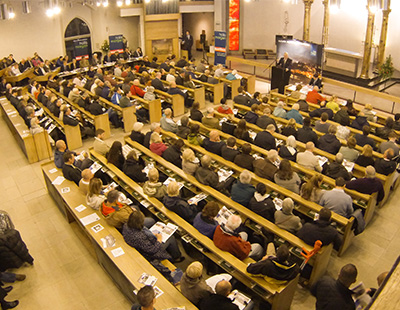Highest price – No matter the circumstance and reason for sale, a client’s first thought will be the maximum price the property will achieve.
The word ‘auction’ to many still raises an element of the red flag, however, most in the business know this will be due to lack of understanding. Once understood, the method of auction is one of speed, ease and enormous opportunity.
So, what are the differences between the two types of auction?
Speed – In terms of speed, the traditional method of auction says that your property or land will be auctioned ‘in room’ to bidders as well as other sources including internet bidders, telephone bidders and bidders via proxy. Once the gavel falls to the highest bidder contracts are exchanged immediately with completion just 28 days later.
The Modern Method of Auction (MMoA) is different and shares similarities with ‘eBay’ style bidding where buyers bid online only and once a bid has been accepted the buyer has 28 to exchange and a further 28 days to complete. We must understand that exchange is not as immediate as it is with the traditional method of auction, meaning the timeline is increased. In fact, the general timeline for the MMoA is 56 days.
Security – Many people turn to auction after experiencing a fall through or even numerous fall throughs. Anyone who has been in this situation knows the journey can be extremely stressful. Time is a precious commodity, something we are all learning through this pandemic, just how precious it is.
The traditional method of auction states that once the gavel falls contracts are exchanged immediately and the sale is legally binding, meaning neither the buyer nor seller can pull out. The risk of a fall through is eliminated. If there are breaches post exchange, the breacher will undertake serious penalties. Such situations are very rare.
While using the Modern Method of Auction a physical auction does not take place. Once a bid has been accepted the buyer still has 28 days to exchange. Although the buyer may have paid a reservation fee to the agent, they are still able to pull out anytime within these 28 days as there is no legal obligation to complete. This means fall throughs are still a possibility once a bid has been accepted. However, if a reservation fee has been paid, we can hope this will minimise the fall through rate.
Price – Sellers will be looking for a maximum sale price while buyers will always look for a steal in order to maximise their value. Now both methods of sale will look to satisfy the client needs but the traditional method of auction states that no fee is paid by the buyer until the fall of the gavel and the exchange has taken place.
The Modern Method of Auction differs here and states that a reservation fee is paid – prior to exchange – generally up to 5% of the purchase price and is non-refundable. This fee is also included in the buyer’s stamp duty calculation.
With either method being pursued by a client the key is to provide clear, transparent information and fees so that each client can fully understand and evaluate their decision. Customer service given can be tip top but if a client doesn’t understand what is required of them then the frustration will be felt.
Remember, frustration will always be remembered over good customer service. Eliminate frustration and a positive customer journey will prevail.
So which method is ‘better’?
At a glance, the sale speed from the moment a sale is made is 28 days for traditional auctions and 56 days for MMoA.
Traditional auctions secure the sale at exchange and the sale is legally binding. The Modern Method of Auction requires a buyer’s reservation fee to commit them to the sale, however, they are able to pull out during the 28 days up until exchange after confirming their winning bid with the only penalty being the loss of the fee paid.
And lastly, price. Both options look to secure the best price for the seller while charging the buyer separate fees and different stages of the process.
Generally, an option chosen will be based on client needs and also the recommendation of those around them.
Zad Siadatan, chief executive officer of Connect UK Auctions, comments: “Traditional auctions, and specifically Connect Realtime©, can provide a larger customer experience in a shorter space of time.”
“Although MMoA provides great potential, the clarity surrounding them is somewhat unclear. If transparency of the process and fees are not understood by a client then the general stigma of the MMoA will grow.”
“Auctions make up only a small fraction of the property market but are increasing year on year. Now is the time to provide value to the client in order to grow.”
Sign up to Auction Academy and learn how to buy and sell at auction successfully.
Want to comment on this story? If so...if any post is considered to victimise, harass, degrade or intimidate an individual or group of individuals on any basis, then the post may be deleted and the individual immediately banned from posting in future.














.png)





Join the conversation
Please login to comment